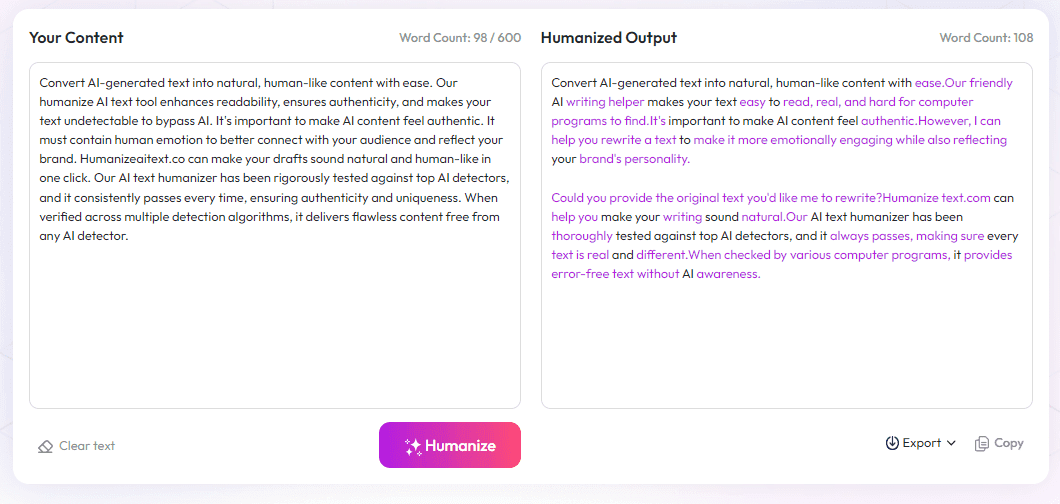Table of Contents
Got it! Here's a short, friendly introduction using the agree-promise-preview method:
If you've ever struggled with understanding complex topics or finding clear explanations, you're not alone. Many of us want straightforward guidance that actually helps us get things done. Keep reading, and I’ll show you simple steps to make tough ideas easier to grasp. In just a few moments, you'll know exactly how to break down complicated information and take the next step with confidence.
Key Takeaways
Key Takeaways
- Start with a clear main question using your primary keyword to help search engines understand your topic and match user queries.
- Organize content logically, using sections and steps in the right order to make it easy to follow and complete.
- Use descriptive subheadings and examples to clarify complex ideas and help readers scan and understand quickly.
- Incorporate visuals like screenshots or charts to make your points clearer and keep visitors engaged.
- Conclude with a straightforward call to action that guides readers on what to do next, turning helpful advice into real results.
- Use keywords naturally throughout your content, including in headings and descriptions, to improve visibility without stuffing.
- Review and polish your writing to keep it simple, short, and engaging, removing jargon and adding personality for better connection.
- Update your content regularly with fresh info and examples to maintain trust and boost your search rankings.

Identify the Main Question or Topic Clearly
The first step in creating content that ranks well is pinpointing your main question or problem in just one or two sentences. This helps you stay focused and ensures your content answers what users are really searching for. For example, if your keyword is "how to start a blog," your core question might be, "What are the essential steps to launching a successful blog from scratch?"
Using your primary keyword prominently in this part ensures Google recognizes what your content is about. It also aligns your page with user intent, making it more likely to appear in featured snippets.
Organize Content in a Logical, Step-by-Step Way
Next, group related ideas under clear headings that directly answer the main question. Breaking your guide into sections like "Choosing a Niche," "Setting Up Your Blog," and "Driving Traffic" makes it easier for readers to follow. Each section should focus on one aspect and be formatted with numbered lists or bullet points where appropriate.
Arrange these steps in the order they should be performed. For example, start with registering a domain before designing your site. This logical flow helps users understand the process clearly, increasing the chances they'll follow through to the end.
Add Clear Subheadings for Details and Examples
To help readers scan your content quickly, include descriptive subheadings that break down complex ideas. Instead of a vague "Design Tips," use "How to Choose a Color Scheme for Your Blog" or "Best Layouts for Readability." Keep explanations short and focused, giving just enough detail to prove your point without overwhelming the reader.
Including examples can clarify tricky concepts. For instance, showing a screenshot of a well-structured blog or listing tools like WordPress themes can make your advice more tangible and actionable.
Use Visuals and Supporting Elements to Clarify
Adding visuals like charts, screenshots, or infographics can make your points stick. For example, a table comparing different blogging platforms helps users decide quickly which one suits their needs. Bullet lists summarizing key steps also make information easier to digest.
Link to relevant content within your site, such as a detailed guide on SEO or a tutorial on creating effective content. This not only keeps visitors engaged longer but also boosts your SEO by distributing link equity across your pages.

Develop a Clear and Compelling Call to Action
Encourage your readers to take the next step by crafting a direct, easy-to-understand call to action.
This could be encouraging them to implement what they've learned, sign up for a newsletter, or explore related content.
A strong CTA helps turn your helpful tips into real progress for your audience, making your content more effective.
Incorporate SEO Best Practices Naturally
Include your primary keywords thoughtfully within headings, sentences, and meta descriptions without overstuffing.
Optimize image alt texts and use internal links to relevant pages on your website to boost discoverability.
Focus on readability and user experience, since search engines favor content that genuinely helps users find what they need.
Review and Edit for Clarity and Engagement
Go through your content multiple times, removing jargon or complex phrases that might confuse readers.
Use short sentences, bullet points, and active voice to keep the flow lively and digestible.
Adding a few witty or personable touches can make your content more relatable and enjoyable.
Update Content Regularly to Keep It Fresh
Keeping your article current with the latest trends and data encourages readers to trust your expertise.
Revisit and revise your content periodically to add new examples, remove outdated information, and improve clarity.
This practice also signals to search engines that your page is actively maintained, which can improve rankings.
FAQs
Defining the main question helps focus your content, ensuring clarity for readers and aligning with their expectations. It guides your content creation and improves search engine relevance using your primary keywords.
Group related ideas under clear headings and present steps in a logical order using numbered lists or bullet points. This approach makes your content easy to scan and understand quickly.
Subheadings break down complex points, making content easier to browse. Supporting visuals like charts and screenshots clarify ideas and keep readers engaged, enhancing overall understanding.
Summarize the key solution clearly and include a specific call to action so readers know the next step to take. This helps them apply what they’ve learned effectively.



